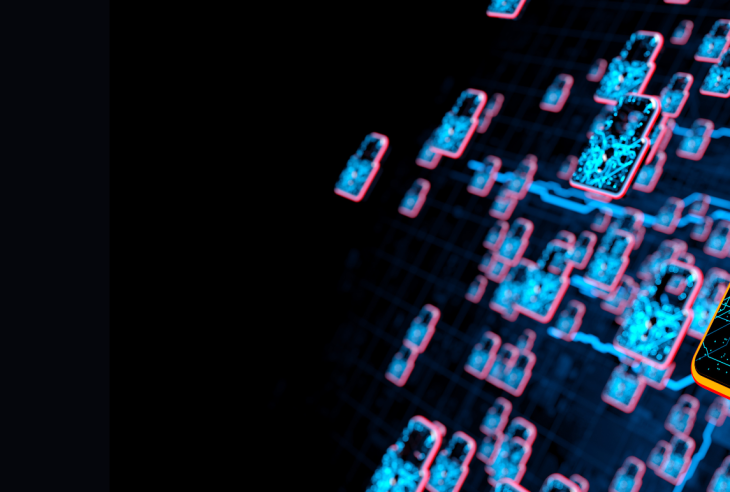As we approach 2023, cybersecurity operations are anticipated to become increasingly complex due to the sophistication of modern cyberattacks. Enterprises are thus under pressure to improve their cybersecurity operations and take a proactive approach toward addressing potential security threats. Traditional security solutions are no longer sufficient for dealing with advanced cyberattacks. Although enterprises have attempted to merge their security and operations teams (SecOps), this has not solved all the existing issues. To achieve optimal efficiency for security teams, automation is the most practical solution. AIOps Security technology has gained popularity as a means to enhance automation in cybersecurity, enabling many enterprises to achieve maximum service availability with effective AIOps-led security solutions. To learn more about the importance of AIOps in automating cybersecurity operations, read further.
Common challenges with cybersecurity automation
It may be difficult for some organizations to comprehend the reasons why traditional cybersecurity systems have become obsolete. Many organizations may be unaware of the necessity to upgrade their current cybersecurity solutions. While there are numerous automation technologies available for cybersecurity operations, the question remains: why opt for AIOps-enabled solutions over other security alternatives? The response lies in the difficulties that arise with automating cybersecurity operations. Although other technologies have failed to address the challenges related to cybersecurity automation, AIOps has been effective. Let us first discuss the challenges with cybersecurity automation in 2023:
Resistance from the enterprise and employees
When an organization implements significant technological changes, employees often resist. This is due to their familiarity with the current security tools and uncertainty about the capabilities and limitations of new cybersecurity technologies. The entrenched use of legacy tools makes it challenging to introduce a technological shift. Furthermore, some employees worry about the proliferation of automation technologies, security teams might think AIOps can be used to monitor their working habits, and employees might view automation as a threat to their jobs, causing them to mistrust the technology.
Organizations must find a way to educate employees about the importance of automation technologies. If only employees knew how much manual labor is reduced with AIOps, they would have asked for it earlier. Besides the employees, an enterprise might also be a little hesitant in adopting AIOps. An enterprise might be happy with the existing security tools that have maintained service availability. However, the enterprise can touch new heights of service availability with AIOps. Only if enterprises were aware of the rising cybersecurity threats would they have adopted AIOps by now.
The increasing complexity of cybersecurity data
The security teams gather performance data from all connected devices and the entire IT infrastructure to detect security issues. By analyzing the performance data, they can quickly identify any anomalies and take immediate action to resolve any software system that is performing irregularly. Often, a minor configuration modification can prevent a severe security breach. This process of collecting and analyzing performance data used to be straightforward when the sample size was smaller.
The size of the IT infrastructure for any organization has increased. Enterprises have thousands of software systems, endpoints, and devices connected to the main IT network. Since the number of elements within the IT infrastructure has increased, the size of performance data has also increased. Security teams struggle to analyze large data sets of performance data. Many automation technologies have been developed to collect, clean, and analyze data quickly. However, none of them provided 100% accuracy. Some data outliers got past those systems and resulted in major security breaches. On the other hand, AIOps based analytics platforms have provided security teams with unmatchable accuracy.
Remote security
The single greatest obstacle to cybersecurity automation post-COVID is remote security. Enterprises had no choice but to employ remote work during the COVID era. Virtual machines were frequently used by businesses to give staff remote computing capabilities. Employees did, however, access company software through their personal networks. Some of these home networks lacked security and were unreliable. Cyber attackers monitor these errors and take advantage of them.
Enterprises need efficient security tools that can monitor network activities remotely. Remote endpoints must always be under the radar for the security teams. Outdated automation technologies could not implement remote security. It is where AIOps based analytics platforms come into the light for remote security.
How is AIOps the key to cybersecurity automation in 2023?
Here are the points that make AIOps much better than other technologies for cybersecurity automation:
Deep-dive analysis of the performance data
Since the size of data has increased, you need a powerful solution for automated analysis. The first step of cybersecurity automation is the collection of data. An AIOps based analytics platform will collect data from different endpoints (including remote endpoints) and analyze them automatically. It conducts a deep-dive analysis of the performance data and finds valuable insights. These insights will help the security teams to ensure proactive cybersecurity.
Automated event correlation
For alerts to be generated, most businesses have too many security systems. The security system issues an alert whenever it detects an anomaly. Yet, some signals can be meaningless, while others might indicate a security compromise. Finding important notifications can be difficult for security personnel. An AIOPs-led platform will automatically correlate events and emphasize the most crucial alarms. AIOps will automate pattern discovery in addition to event correlation to find high-impact problems in the infrastructure. At the end of the day, service reliability for security teams will significantly increase.
Mitigate risks proactively
Humans are reactive, which means they identify the root cause of a problem after it has occurred. An AIOps based analytics platform will identify the risks ahead of time. For example, let us say a critical software system responsible for the security of the network is about to stop working. An AIOps-led solution will monitor the behavior of the software system and notify before it exhausts. With AIOps, security teams can mitigate risks proactively and preserve service reliability.
Less mundane tasks
The cybersecurity department is burdened with numerous mundane tasks such as data cleaning and event prioritization, which can consume significant amounts of time for security teams. AIOps Security technology offers the opportunity to automate these tedious tasks, freeing up time for the team to focus on more critical activities and achieve greater efficiency. To realize the full potential of automation, it is essential for cybersecurity teams to embrace hyper-automation with AIOps. By implementing an AIOps-enabled cybersecurity system, teams can streamline their operations and improve their overall performance. Take action now and invest in an AIOps-led cybersecurity solution.

Author
Sangeeta Malkhede, Global Head of HR, GS Lab | GAVS
Sangeeta Malkhede heads our Global HR team. A senior HR leader with strong convictions, values, and experiences, she has an innovative approach towards HR practice and at her previous leadership roles she drove overall HR to enable Culture of Performance, Building Leadership Talent, Organization Effectiveness, Change Management and Employee Engagement etc.
Sangeeta is an avid reader and a keen observer of human behavior. She enjoys playing & following Badminton, Tennis and Cricket, has a passion for cooking, travelling and hydroponic farming.




